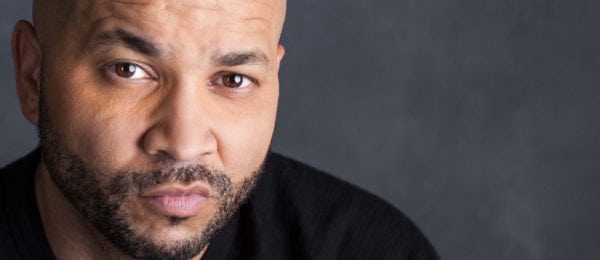When Cory Taylor woke up feeling numb on his right side, he initially thought he’d just slept on it funny.
He was a busy man and he continued with his day and didn’t think much about the numbness, which seemed to go away at first.
A longtime talent manager, Taylor worked with up-and-coming rhythm and blues stars. He was constantly traveling to meet with clients, pitch TV shows and to produce shows such as “RnB Spotlight.”
He worked long hours, with little sleep and eating on the run as he juggled multiple projects at a time.
But later that night, the numbness happened again. He tried to take a shower and found it difficult to balance and fell.
Shaken by the sensation, he decided to drive himself to the hospital, where the numbness became increasingly worse.
Taylor, 43, didn’t recognize that he was experiencing one of the most common symptoms of a stroke: numbness or weakness on one side and that he should call 911.
Often, the first symptoms of a stroke are ignored because they are reminiscent of other experiences—for example sleeping in an awkward position that causes an arm to feel tingly, said Lee H. Schwamm, M.D., C. Miller Fisher chair and chief of Massachusetts General Hospital Stroke Services.
“Don’t wait or lie down and hope to feel better,” said Dr. Schwamm, a professor of neurology at Harvard Medical School. “If you think it’s a stroke, call 911 and tell them you think it’s a stroke because it increases the chance that you will get picked up, transported and treated faster.”
Seeking medical treatment immediately is crucial because many of the emergency treatments capable of reversing damaging effects must be administered in the first hours after stroke, said Dr. Schwamm, who also co-chairs Mission: Lifeline Stroke, an American Heart Association committee dedicated to pre-hospital care and improving patient awareness.
Stroke is the No. 5 cause of death in the United States and a leading cause of long-term disability. It’s also the leading preventable cause of disability. Among non-Hispanic blacks, the risk for a first-ever stroke is almost twice that of whites and non-Hispanic blacks between the ages of 45 and 64 have two-to-three times the risk of stroke as whites.
At the hospital, the doctors determined that Taylor had experienced an ischemic stroke—which accounts for 87 percent of strokes and occurs when a clot or mass blocks blood flow to the brain.
Since that day in February 2016, Taylor has worked to recover from continuing weakness on his right side. He initially stayed in the hospital and an inpatient rehabilitation facility to recover and build strength before being sent home to continue in an outpatient setting.
He was given a cane to assist with walking, but avoided using it as he struggled to adapt to his new condition. He resumed driving about a month after returning home, but has spent more than a year trying to rebuild strength and dexterity on his right side.
He limps now and can no longer run or play basketball. He still needs help with some tasks requiring fine motor skills, such as fastening a watch.
But today, his health is a priority as he resumes his career. He is working with multi-platinum, Grammy Award-winning group Blackstreet. He recently sold a television show and he is working on a weekly radio show.
“I try not to take on so much so it doesn’t get overwhelming or I don’t get overtired,” said Taylor, who lives in Virginia Beach, Virginia. “Before I was constantly stressed out.”
He still undergoes rehab training twice a week and he changed his diet, cutting back on fried foods and adding more vegetables and fruit. He also takes his medications as prescribed.
“I’m grateful for life,” Taylor said. “I don’t take anything for granted anymore. I’m just on a journey to get back to myself.”
From American Heart Association News
R&B Talent Manager’s Life-Changing Stroke






